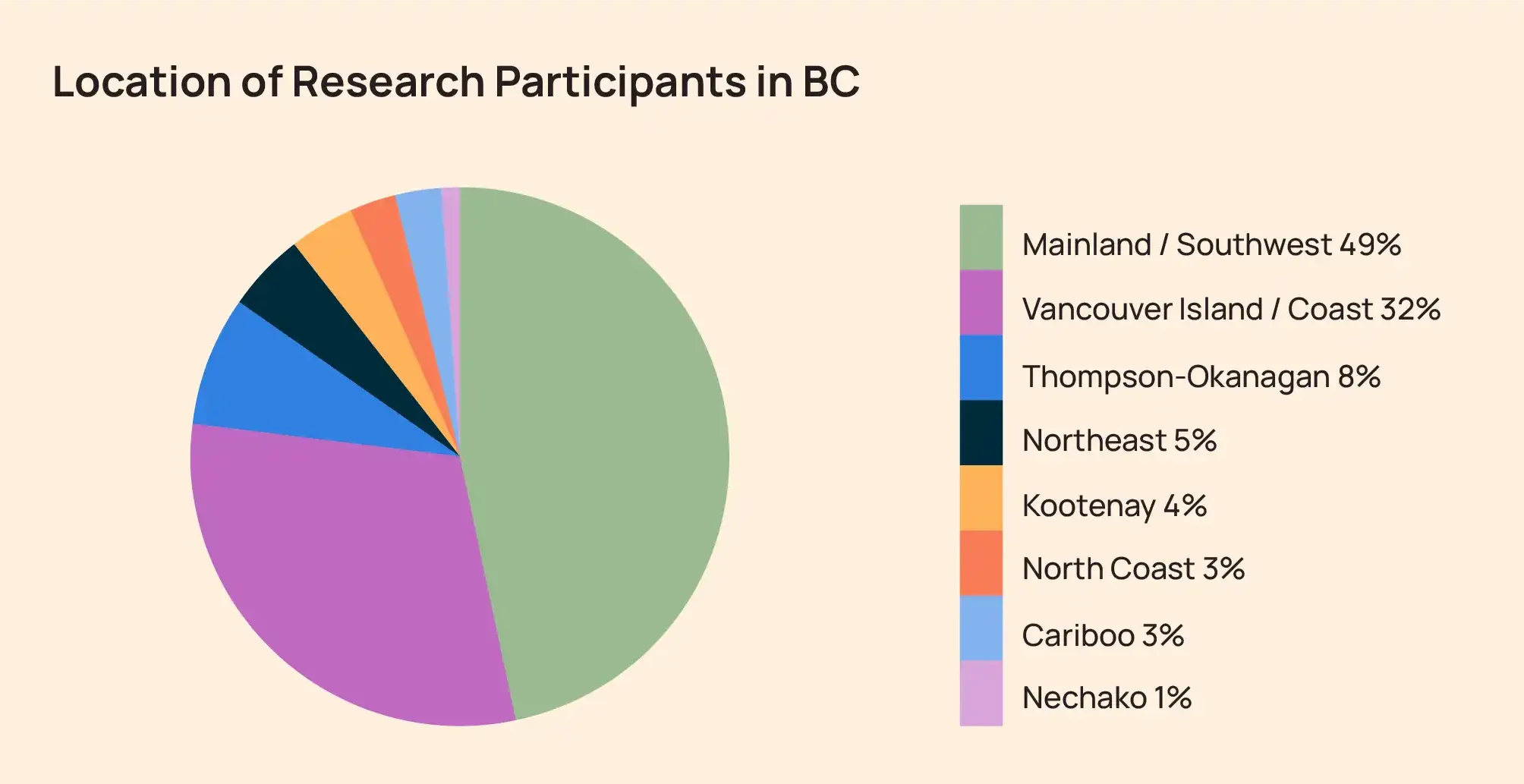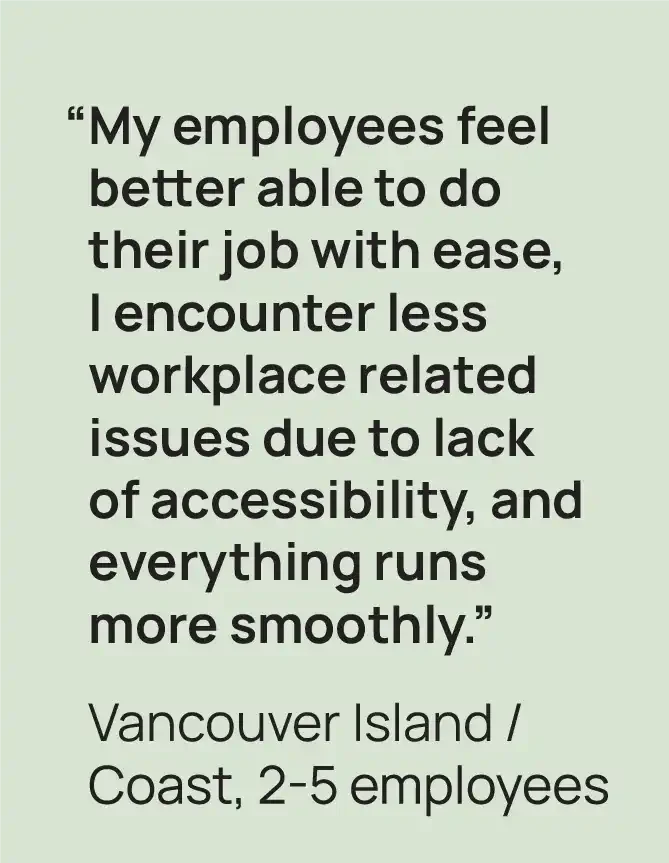Download the full infographic report: The Current State of Small Business Accessibility in BC.
Everyone in BC benefits from improved accessibility. Whether you’re exploring your options or taking the first steps to be more accessible, you’re on the right track. Small changes to how you operate as a business can have a massive impact on the lives of those living with a disability.
At Small Business BC, we are actively improving accessibility to become more inclusive. And we want to help small businesses across the province do the same.
To help, SBBC commissioned market research firm Lux Insights to conduct accessibility research in 2023. SBBC is using the findings to guide the creation of supportive resources to improve workplace accessibility.
In this article, we’ll share some of the biggest research findings to help small business owners understand how they can embark on a journey toward better accessibility.
What is Accessibility in the Workplace?
Accessibility in the workplace means efforts have been made to remove barriers in workspaces, employment practices, and workplace culture.
Barriers are anything in an environment that limits functioning and creates obstacles. For example, negative attitudes toward disability and a lack of assistive technology are both barriers.
By removing and preventing barriers, employers can create an inclusive workplace accommodating employees and candidates of all abilities.
Accessibility in the workplace encompasses much more than the physical environment. For example, according to the latest Statistics Canada data on disabilities, mental health-related disabilities are increasing at a higher rate than other disability types.
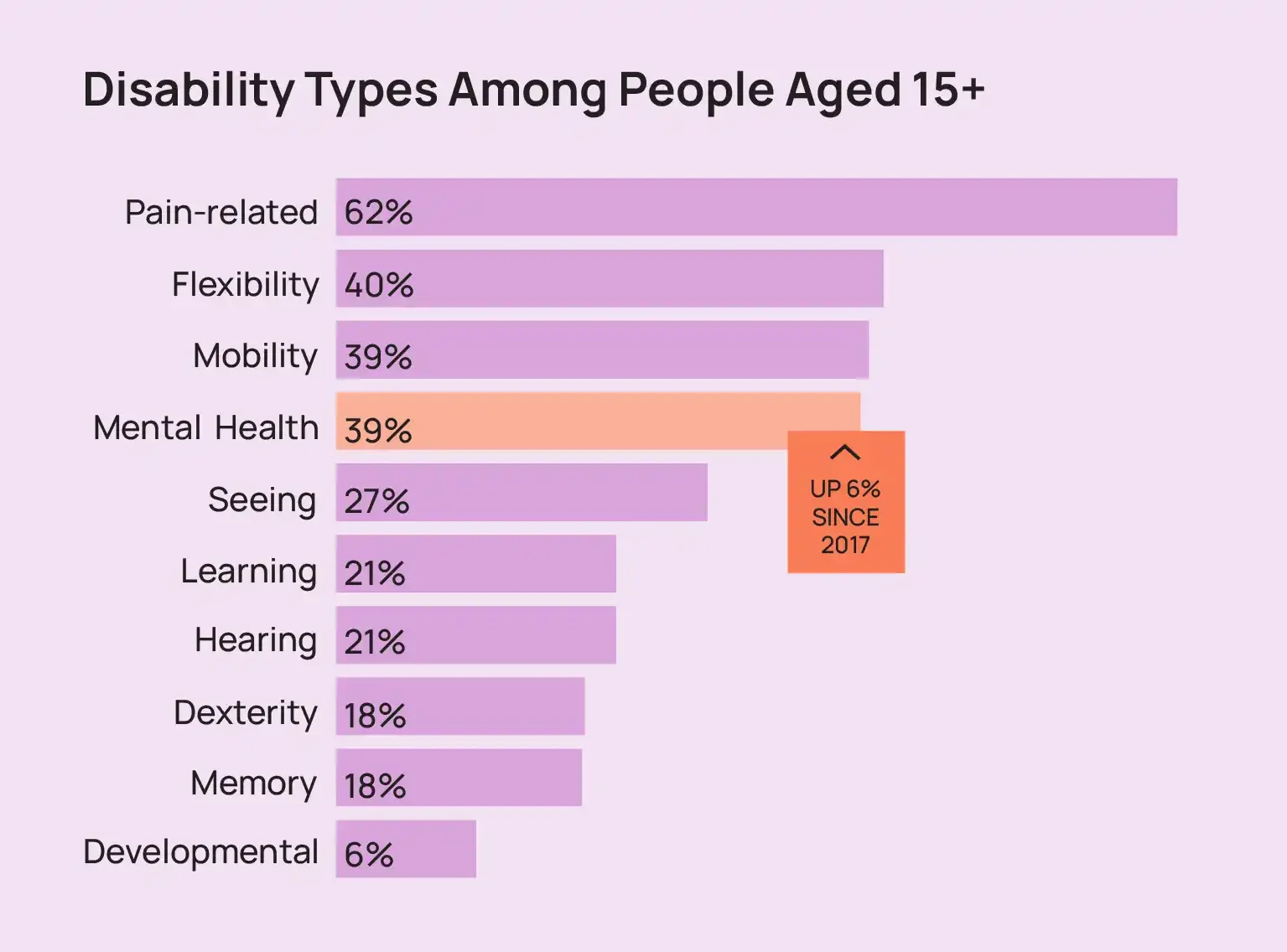
Learning how to accommodate mental health-related disabilities is a priority for small business owners, according to our accessibility research.
Let’s look next at how we got our data:
About the Accessibility Research
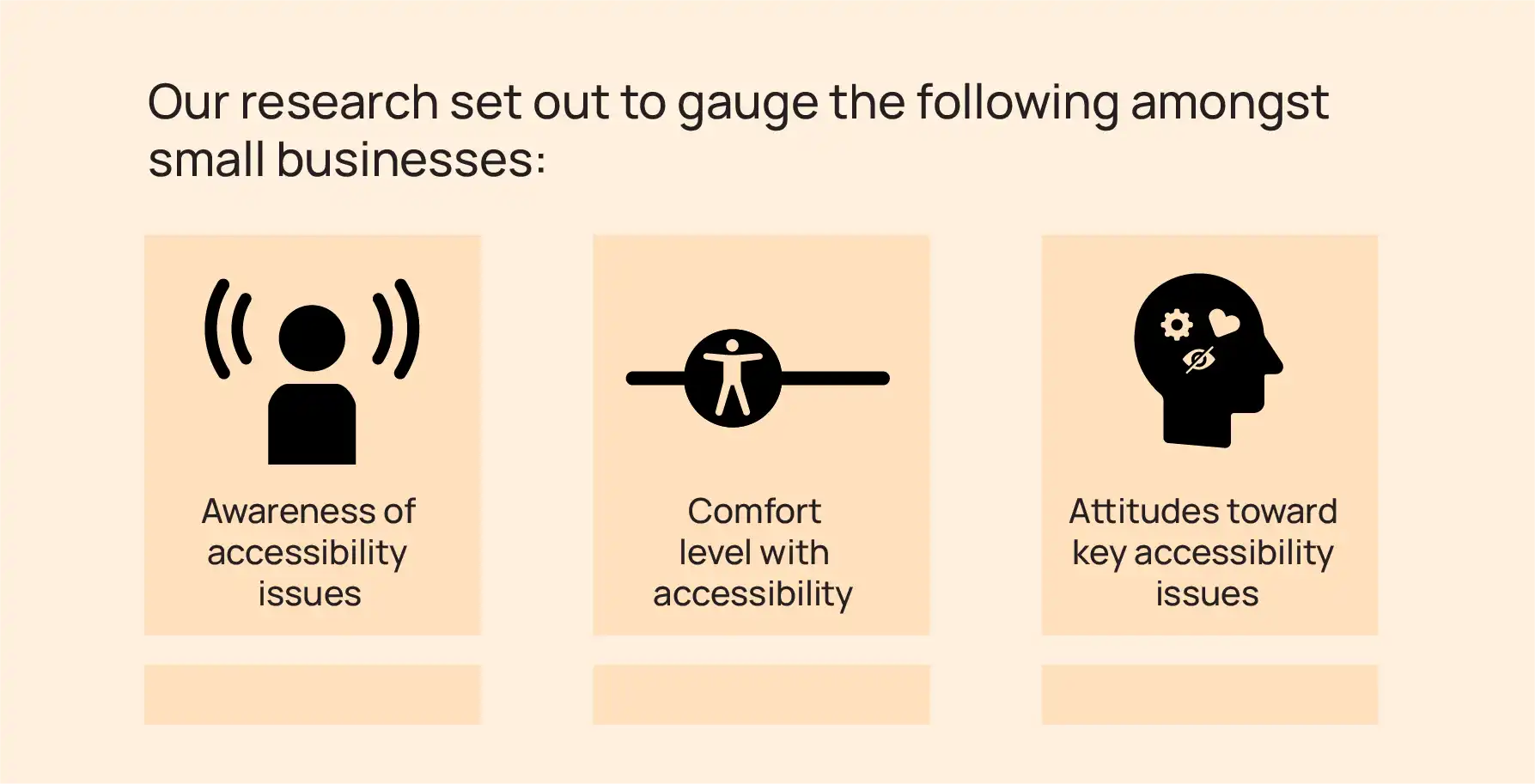
Our research set out to gauge the following amongst small businesses:
- Awareness of accessibility issues.
- Comfort level with accessibility.
- Attitudes toward key accessibility issues.
To assess these, part of our research included a 10-minute online survey. It was open to select key decision-makers (owners or senior leaders) in small businesses based in BC.
While most respondents were from BC’s Mainland/Southwest region, we heard from all over the province. Here’s the respondent geographical data broken down:
In-depth interviews with business owners were also conducted to investigate the trends and data from the survey. Overall, the results showed that respondents were aware of and supportive of accessibility in the workplace.
But more work must be done to create a more equitable workplace. Let’s take a look at some of the top insights from the research:
Start with Optimism and Consider the Benefits
Your feelings and attitudes toward creating a more accessible workplace matter. Start from a place of hope and optimism to help ensure your success.
According to our research, respondents who felt positively about imagining a more accessible workplace were more likely to place greater importance on accessibility.
When imagining a more accessible workplace, respondents correlated that to feelings of hope, optimism, confidence, and excitement.
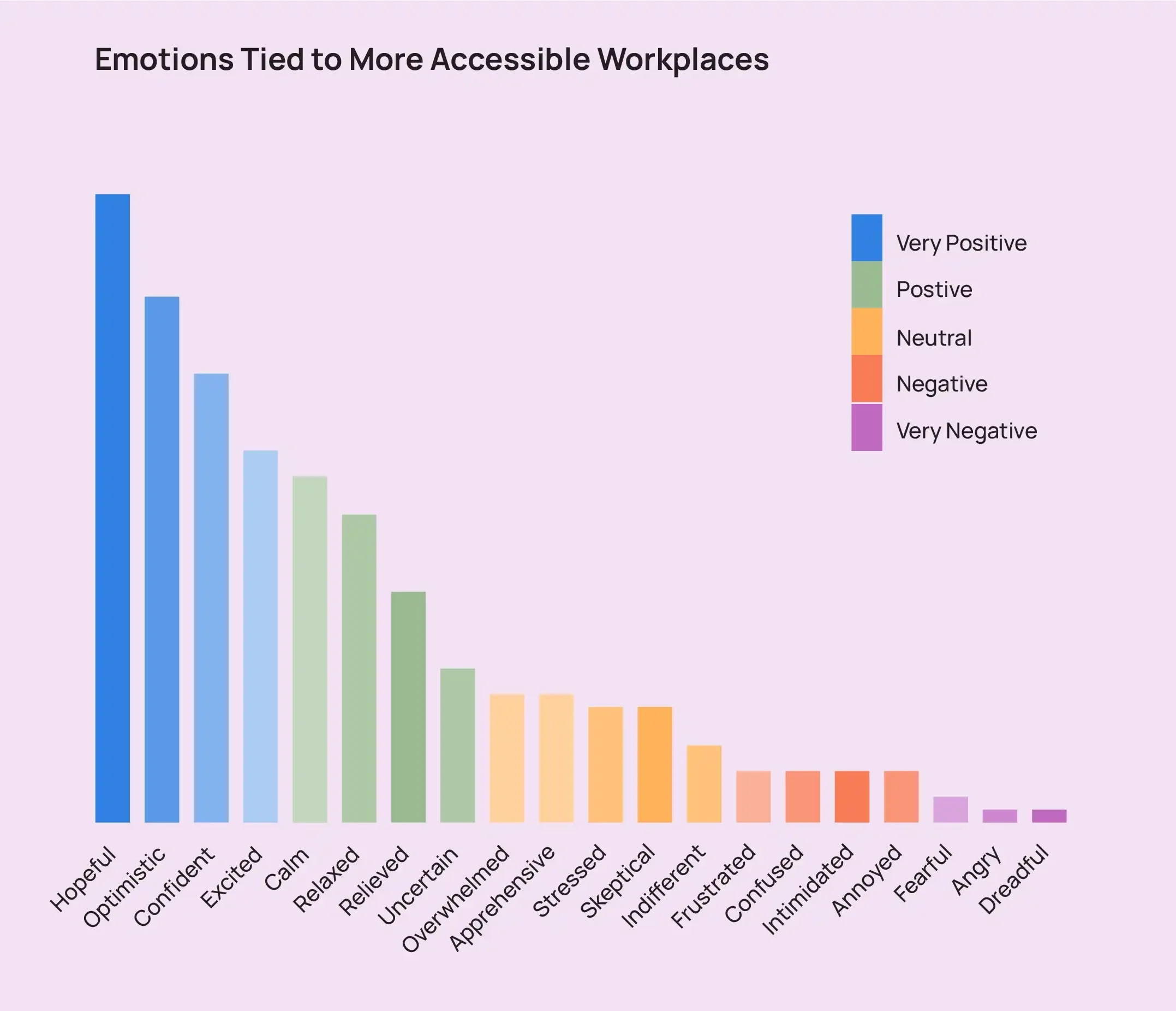
| Takeaways: Get excited about the opportunity to create a more inclusive workplace. Consider the impact you will have in your community and beyond. |
As part of our research, respondents were shown a selection of key benefits of increased accessibility.
Nearly half were curious about how better accessibility improves job performance and satisfaction (48 percent). Other benefits, like improved team diversity and the ability to attract new talent, were also attractive to respondents (31 percent).
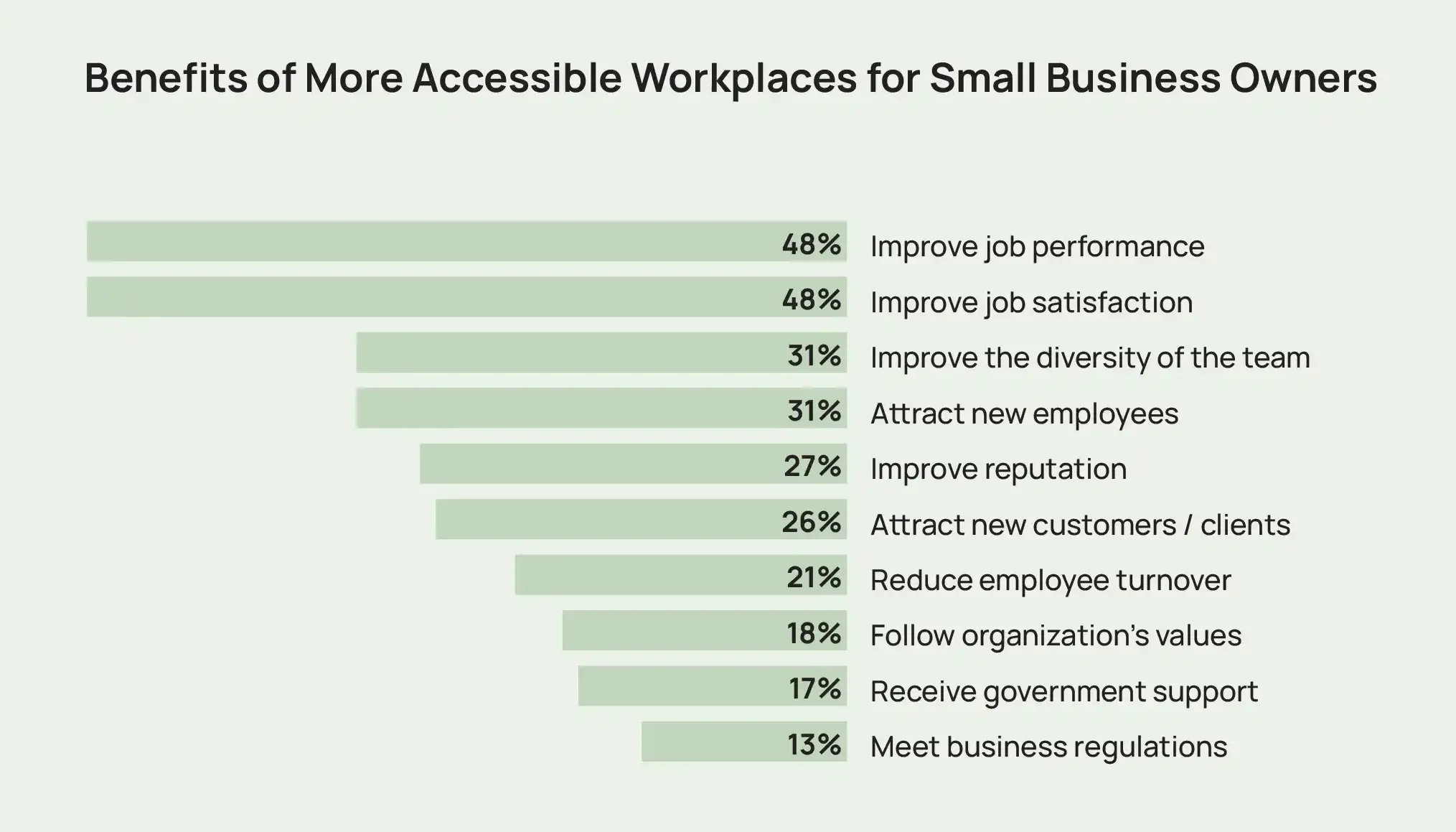
| Takeaways: Rather than focusing on what you lack, consider what you stand to gain and see accessibility as a tool for growth. |
Prioritizing Accessibility
During the in-depth interviews, small businesses shared their top priorities and goals:
- Financial Health – Business owners prioritize ensuring the company is financially healthy and profitable.
- Business Growth – Growing the business, whether by opening up to new markets, attracting more customers, hiring new talent, or expanding to new locations, was a secondary priority for owners.
- Employee Safety – By providing safe environments for staff, businesses hoped to see less stress and more productivity.
Workplace accessibility was low on the list of priorities. This is mainly because participants were not aware of the positive impacts of accessibility on their business.
The more questions researchers asked, the more participants pieced together how accessibility can help them reach their goals.
For example, respondents began to see how, by having an accessible workplace, they could attract a broader talent pool, reduce employee turnover, increase employee satisfaction and performance, and help staff feel safe and empowered.
| Takeaways: Small business owners can make the connection between workplace accessibility and a positive impact on their business by engaging in conversations and questions about disability, accessibility, and inclusion. |
Understanding Accessibility
Our research showed that knowledge, priority, importance, and current performance on accessibility are intertwined. For example, respondents who said they knew a lot about accessibility were more likely to place greater importance and priority on it.
According to our research, three in five respondents rate their workplaces’ current performance on accessibility as “good”. When it comes to understanding specific limitations, respondents’ confidence dipped.
Through the interview process of our research, participants recognized that their understanding of workplace accessibility was limited.
From these findings, SBBC has gone to work on creating resources for specific disabilities to help business owners.
| Takeaways: Consider that workplace accessibility is more expansively defined than you may think and may include considerations for many different types of disabilities. |
Supporting Limitations
According to the Accessible Canada Act, disability means any impairment, including a physical, mental, intellectual, cognitive, learning, communication or sensory impairment — or a functional limitation — whether permanent, temporary or episodic in nature or evident or not, that, in interaction with a barrier, hinders a person’s full and equal participation in society.
A functional limitation is a reported difficulty level in one of these specific spheres of activity; hearing, seeing, mobility, communication, cognition, and mental health.
In our research, interview respondents said they were willing to accommodate to the extent that they do not compromise the capacity to perform work.
In our research, three limitations stood out to respondents:
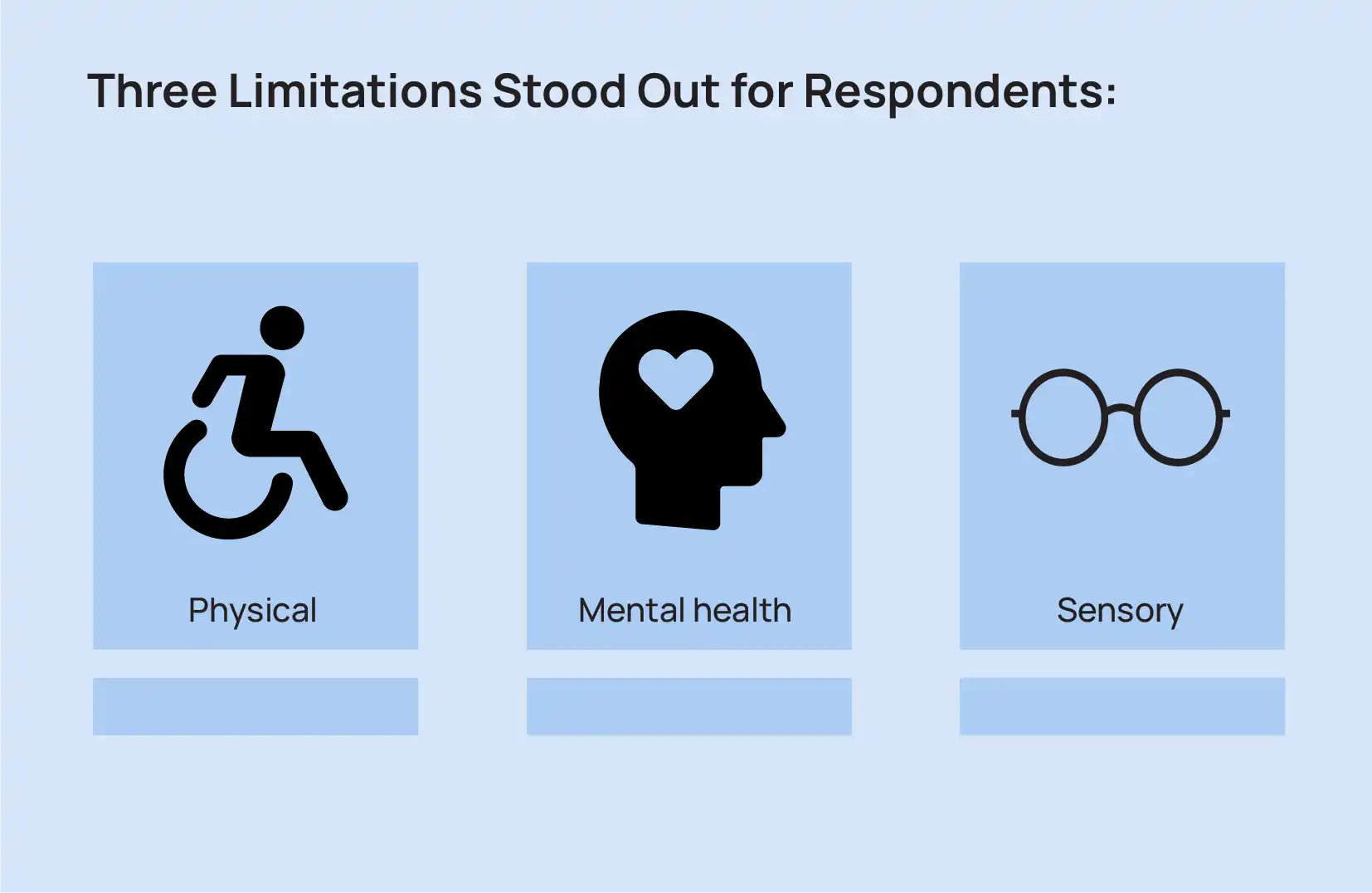
- Mental Health
- Seen as the most common but requires more official guidance and training.
- Concern about the impact on other employees that may prevent accommodation.
- Sensory
- Pose issues related to the nature of the work that would be difficult, but not impossible, to overcome (e.g., having eyesight to work in a chemistry lab).
- Some mention the addition of new tools to aid in accommodating this limitation.
- Physical
- Seen as tricky to accommodate due to a combination of the nature of the job (e.g., requires lifting) and the perceived hurdles to make the workplace more physically accessible (e.g., installing elevators).
| Takeaways: While not every job can be made accessible to everybody, employers can support staff with limitations thanks to changes in best practices and technology. |
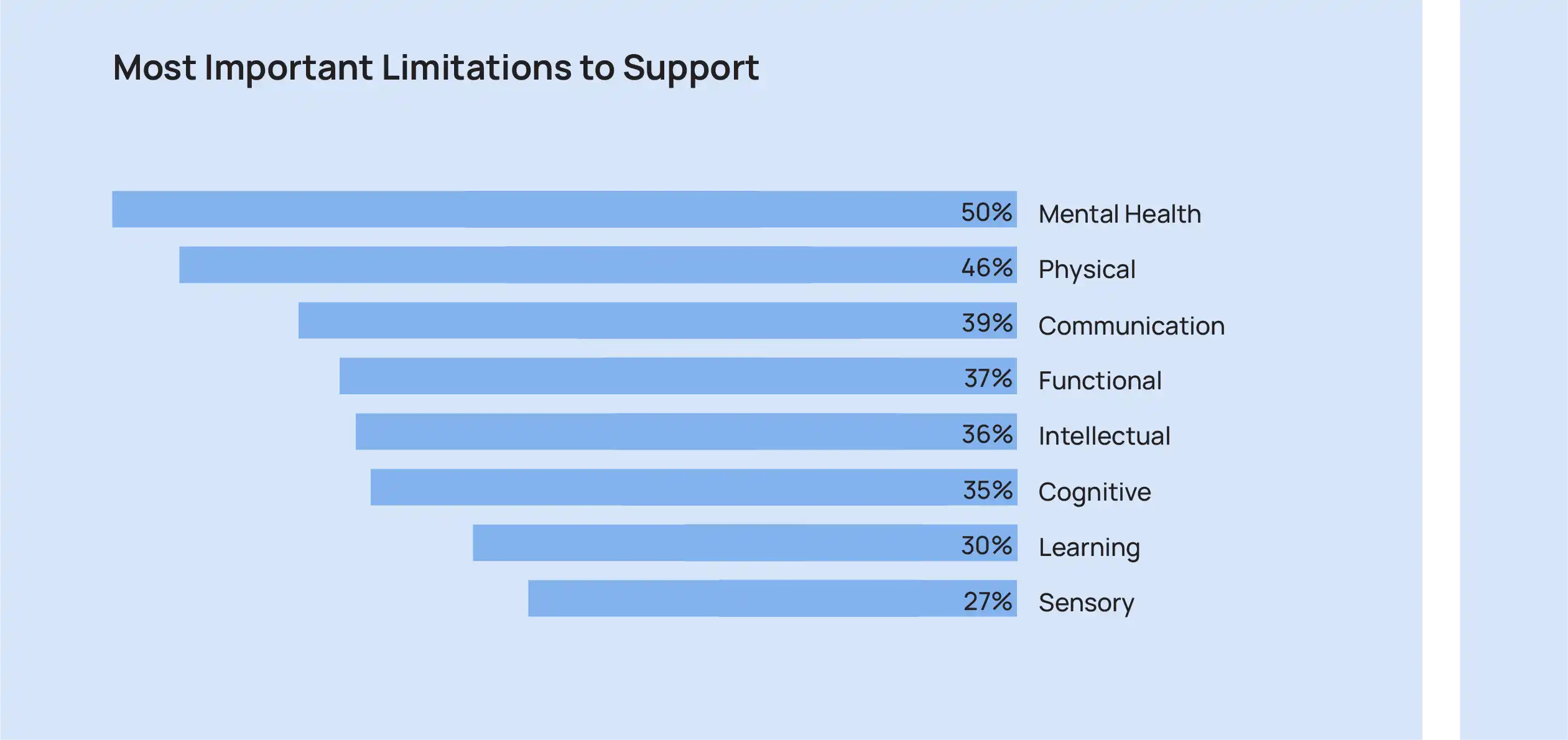
Challenging Barriers
According to our research, respondents find it difficult to prioritize accessibility due to their limited ability to change the physical workplace and built environment.
Respondents cited limited financial resources, jobs requiring physical abilities, and lack of time as perceived barriers to accessibility. “Not knowing where to start” was a concern of participants. They did not know where to find available resources on accessibility topics.
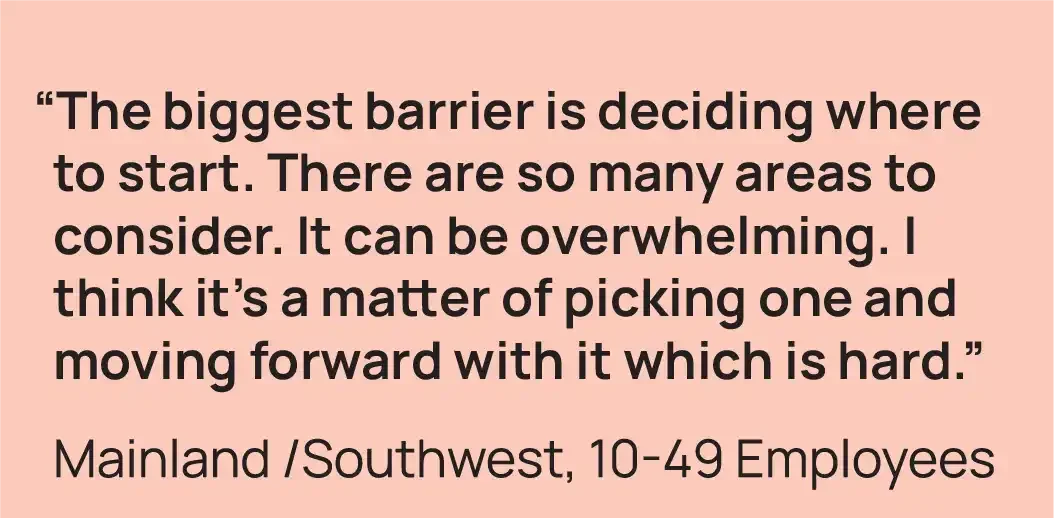
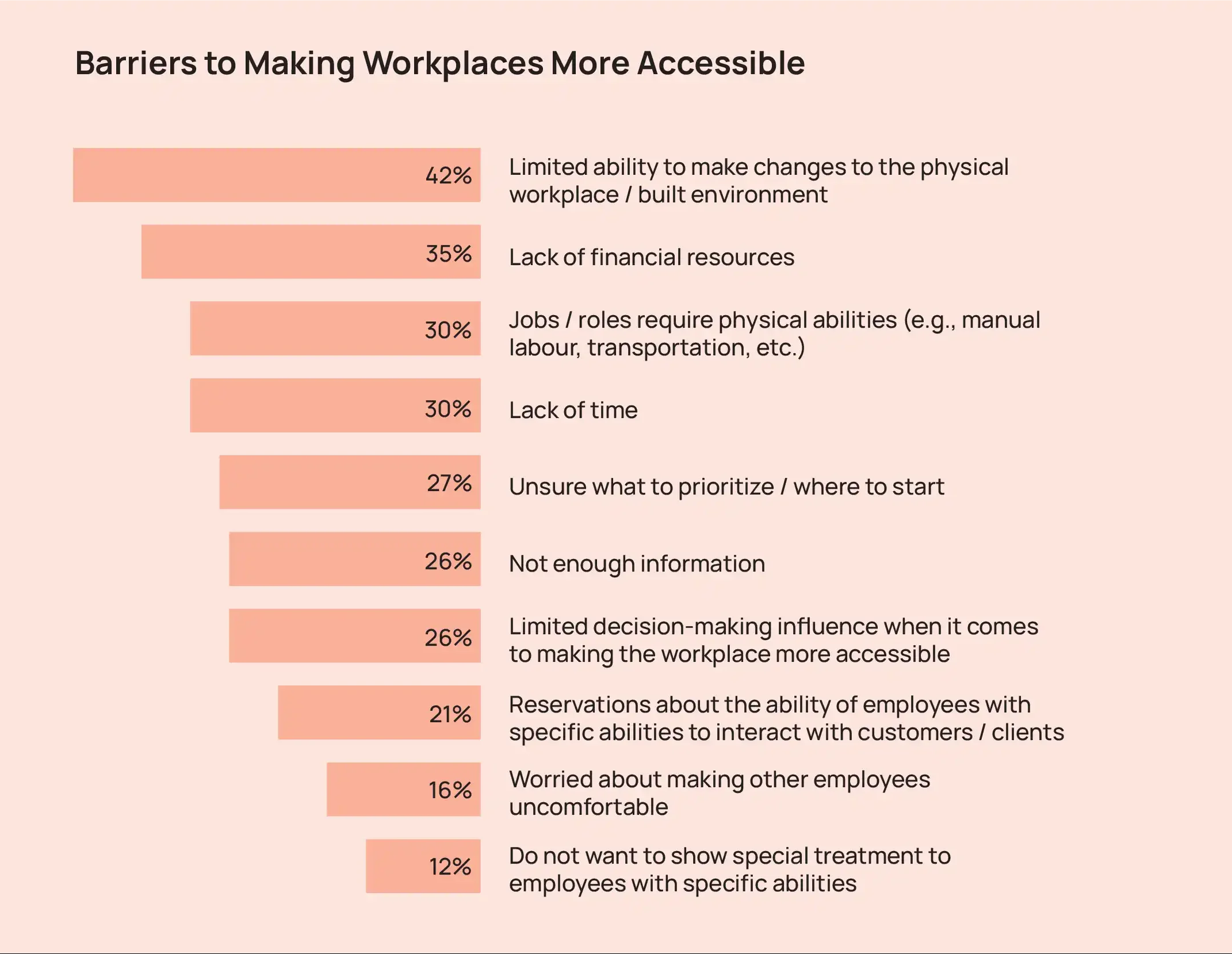
Based on these findings, SBBC will create tools to help small businesses increase their disability confidence.
Disability confidence increases as leaders and organizations continue the accessibility journey. Accessibility isn’t a destination — it’s a journey. You can see it as a cycle of gathering knowledge, making changes, and gathering data to inform more changes.
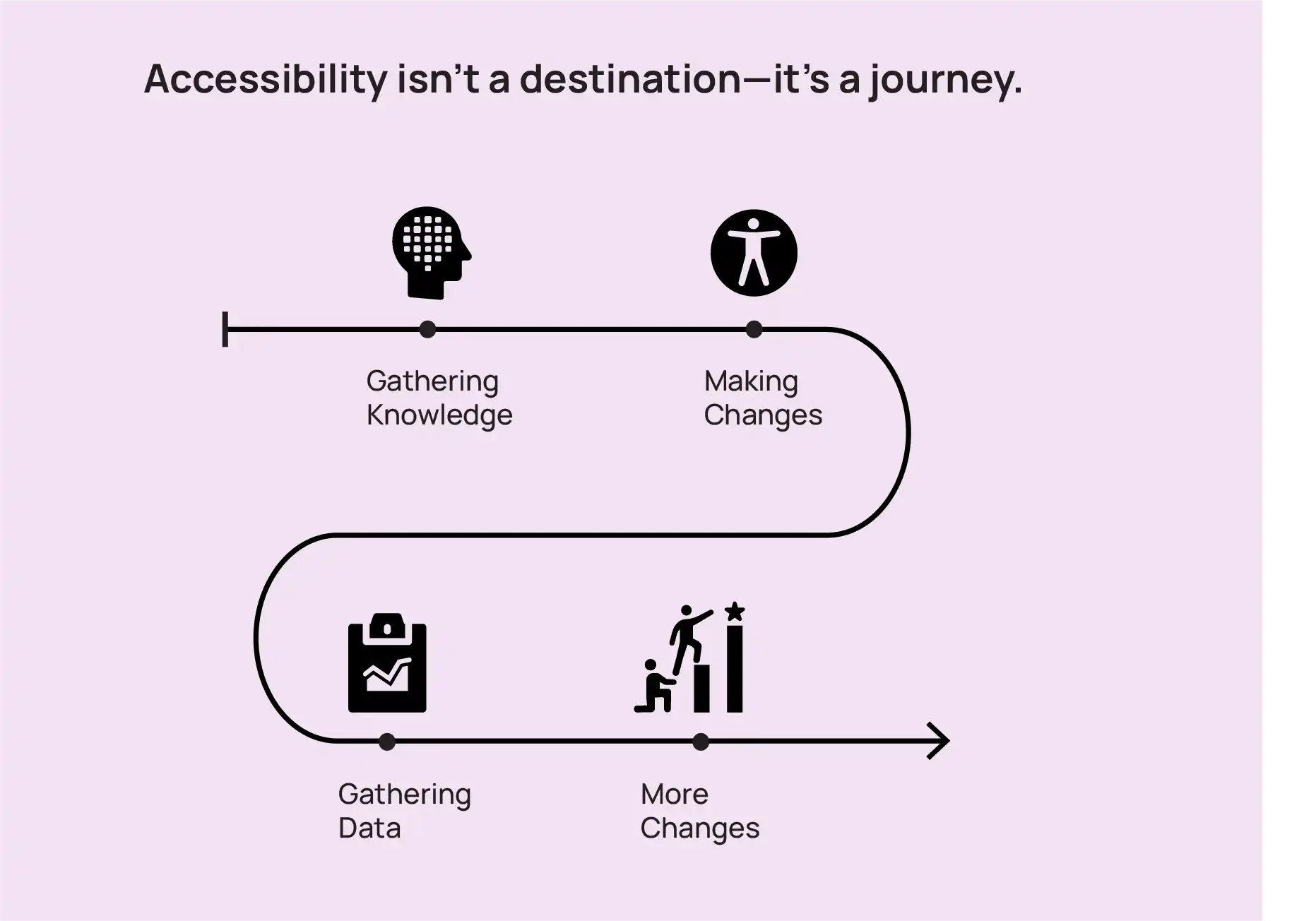
Start by improving your understanding of disability to increase your disability confidence. Then, work to find ways to remove and prevent barriers for people with disabilities. Remember, we’re in this together!
You can learn more about the Workplace Accessibility Grant and see if you’re eligible for up to $5,000 in reimbursements.
Download the full infographic report: The Current State of Small Business Accessibility in BC.
Continue your Accessibility Journey with SBBC
Small Business BC is a non-profit resource centre for BC-based small businesses. Our Workplace Accessibility Resources page is full of tips, tools, and more to support your next stage.
We gratefully acknowledge the financial support of the Province of British Columbia through the Ministry of Social Development and Poverty Reduction.
